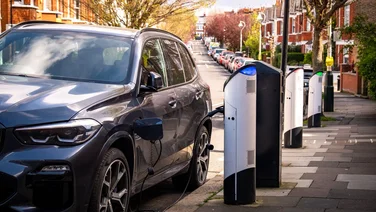Get Free Solar Panel Quotes
Find out how much solar panels would cost you
Do you need solar panels for your home or business?
Fill in our form - Get a free quote - Start saving on energy bills
Why get solar panels?
- Generate free, green electricity
- Reduce your electricity bill by up to 64%
- Get paid for what you don't use
As featured in:



News
The latest news, analysis, guides and opinion.

MG IM5, MG IM6 and Honda EVs unveiled at Goodwood Speed Festival
Carmaker MG unveiled two new additions to its all electric line-up, the MG IM5 saloon and the MG IM6 SUV at Goodwood Speed Festival, while Honda also announced its return to the EV market after its exit in 2023.
-
 British and French solar generation hit new records UK solar generation hit a new record on Tuesday 8 July, with peak generation recorded at 16gW, according to the University of Sheffield, with photovoltaic power supplying 39% of demand on that day.
British and French solar generation hit new records UK solar generation hit a new record on Tuesday 8 July, with peak generation recorded at 16gW, according to the University of Sheffield, with photovoltaic power supplying 39% of demand on that day. -
 How to save energy at home Here are some handy ways to meaningfully save energy at home now and long into the future.
How to save energy at home Here are some handy ways to meaningfully save energy at home now and long into the future. -
 New government EV grant will save consumers £3,750 Electric Car Grant (ECG) to save consumers on the costs of a new EV.
New government EV grant will save consumers £3,750 Electric Car Grant (ECG) to save consumers on the costs of a new EV. -
 New £63m boost for Britain’s electric vehicle ‘revolution’ Drivers across England are set to see an electric vehicle (EV) revolution after the government announced a £63m funding boost to ‘supercharge’ Britain’s EV infrastructure, driving down charging costs and giving funding back to working people.
New £63m boost for Britain’s electric vehicle ‘revolution’ Drivers across England are set to see an electric vehicle (EV) revolution after the government announced a £63m funding boost to ‘supercharge’ Britain’s EV infrastructure, driving down charging costs and giving funding back to working people. -
 UK still trails behind Europe despite heat pump sales boom The UK has seen huge growth in heat pump installations, yet it is still far behind other countries in Europe, particularly Norway.
UK still trails behind Europe despite heat pump sales boom The UK has seen huge growth in heat pump installations, yet it is still far behind other countries in Europe, particularly Norway. -
 Turning off wind farms costs consumers hundreds of millions UK consumers are currently paying hundreds of millions of pounds in wasted renewable energy because the grid can't keep up.
Turning off wind farms costs consumers hundreds of millions UK consumers are currently paying hundreds of millions of pounds in wasted renewable energy because the grid can't keep up. -
 The 14 best green apps There are free apps for everything these days, including ones that can help you have a greener lifestyle – and we're here to show you the best.
The 14 best green apps There are free apps for everything these days, including ones that can help you have a greener lifestyle – and we're here to show you the best. -
 High energy bills prevent 43% of Brits from buying green tech The skyrocketing cost of living and energy have stopped 43% from buying low-carbon technology, according to our National Home Energy Survey.
High energy bills prevent 43% of Brits from buying green tech The skyrocketing cost of living and energy have stopped 43% from buying low-carbon technology, according to our National Home Energy Survey.
